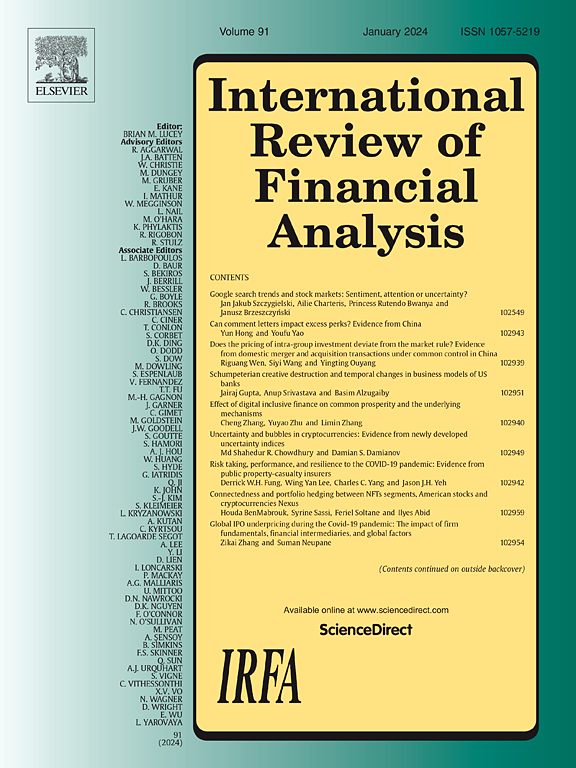Financial uncertainties drive extreme risks in China
IF 7.5
1区 经济学
Q1 BUSINESS, FINANCE
引用次数: 0
Abstract
The identification of primary financial uncertainties driving extreme risks is a challenging task due to the unobservability of uncertainty and pseudo-significance in data-rich environments. While previous study mainly focuses on specific uncertainty that tightly linked to specific theoretical notions or limited datasets and its driving ability to the systemic risk in the financial markets, this study investigates the impacts of a bundle of financial uncertainties on extreme risks using a robust empirical framework. By constructing financial uncertainty indices that exclude the entire forecastable component from a big data sample set and assessing extreme financial risk through Expected Shortfall (ES), then identifying multiple financial uncertainties that significantly influence extreme risks. The findings indicate that China's financial uncertainties volatile with greater magnitude and less frequently compared with the extreme risks. From statical perspective, uncertainties from the central bank, deposit and loan, foreign exchange, and stock systems are primary robust drivers of extreme risks during the overall sample period. Dynamically, the robust positive relationship between multiple financial uncertainties and risks shifts from strong to weak and then a partial rebound. The uncertainty of deposit and loan systems act as a more significant driver during the global financial crisis period, while the uncertainty of stock and bond systems are more dominant in the epidemic period. These results emphasize the importance of considering different types of financial uncertainties and time-varying features when assessing financial stability, providing valuable insights for policymakers and financial market participants for risk management.
金融不确定性给中国带来极端风险
由于在数据丰富的环境中不确定性和伪显著性的不可观察性,识别导致极端风险的主要金融不确定性是一项具有挑战性的任务。以往的研究主要关注与特定理论概念或有限数据集紧密相关的特定不确定性及其对金融市场系统性风险的驱动能力,而本研究使用稳健的实证框架考察了一系列金融不确定性对极端风险的影响。通过构建排除大数据样本中全部可预测成分的金融不确定性指数,并通过预期缺口(ES)评估极端金融风险,从而识别出对极端风险有显著影响的多个金融不确定性。研究结果表明,与极端风险相比,中国金融不确定性的波动幅度更大,频率更低。从统计角度来看,在整个样本期内,来自央行、存贷款、外汇和股票系统的不确定性是极端风险的主要强劲驱动因素。动态上,多种金融不确定性与风险之间的正相关关系由强转弱,然后部分反弹。在全球金融危机期间,存款和贷款体系的不确定性是更重要的驱动因素,而在疫情期间,股票和债券体系的不确定性更为主导。这些结果强调了在评估金融稳定性时考虑不同类型的金融不确定性和时变特征的重要性,为政策制定者和金融市场参与者的风险管理提供了有价值的见解。
本文章由计算机程序翻译,如有差异,请以英文原文为准。
求助全文
约1分钟内获得全文
求助全文
来源期刊

International Review of Financial Analysis
BUSINESS, FINANCE-
CiteScore
10.30
自引率
9.80%
发文量
366
期刊介绍:
The International Review of Financial Analysis (IRFA) is an impartial refereed journal designed to serve as a platform for high-quality financial research. It welcomes a diverse range of financial research topics and maintains an unbiased selection process. While not limited to U.S.-centric subjects, IRFA, as its title suggests, is open to valuable research contributions from around the world.
 求助内容:
求助内容: 应助结果提醒方式:
应助结果提醒方式:


